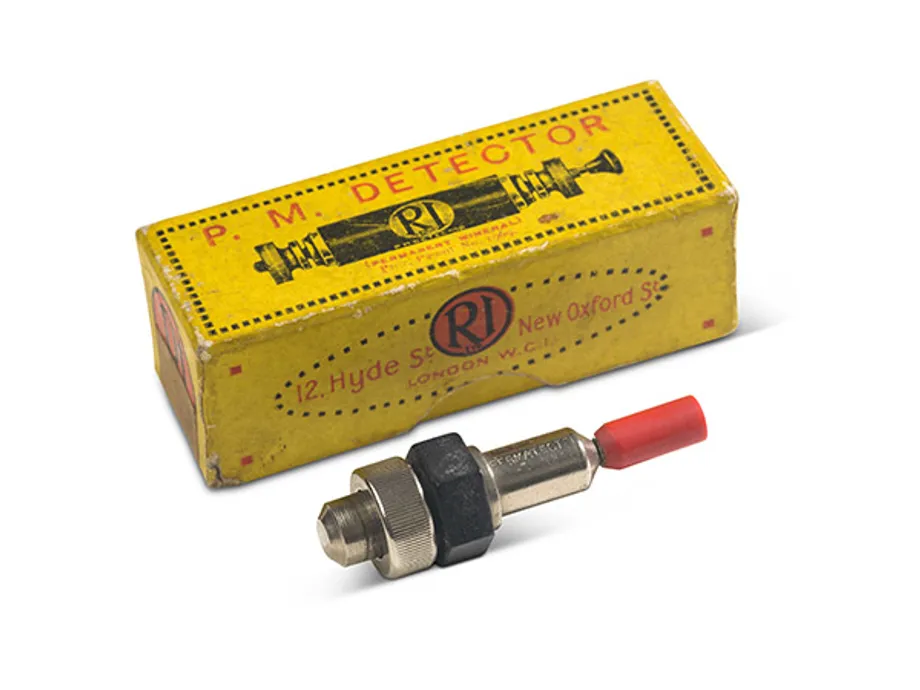Electronic semiconductivity
Semiconductor devices are electronic components that exploit the electronic properties of semiconductor materials, principally silicon, germanium, and gallium arsenide, as well as organic semiconductors.
Semiconductor devices have replaced thermionic devices (vacuum tubes) in most applications. They use electronic conduction in the solid-state as opposed to the gaseous state or thermionic emission in high vacuum.
Permatector
The item displayed is a permanent mineral detector, a device used to permanently place a 'whisker' in a crystal radio set upon the crystal.
A cats-whisker detector (sometimes called a crystal detector) is an early electronic component consisting of a thin wire that lightly touches a crystal of semiconducting mineral (usually galena) to make a crude point-contact rectifier.
The cats whisker detector was the first type of semiconductor diode and was the first semiconductor electronic device. The semiconductor diode was developed at the same time as the thermionic (vacuum tube) diodes in the early 1900s.

